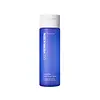What's inside
What's inside
 Key Ingredients
Key Ingredients

 Benefits
Benefits

 Concerns
Concerns

 Ingredients Side-by-side
Ingredients Side-by-side

Water
Skin ConditioningGlycolic Acid
BufferingHamamelis Virginiana Water
AstringentLactic Acid
BufferingSodium Hydroxide
BufferingPolysorbate 20
EmulsifyingPhenoxyethanol
PreservativeParfum
MaskingPhytic Acid
Ethylhexylglycerin
Skin ConditioningGlycerin
HumectantChamomilla Recutita Flower Extract
MaskingCitrus Limon Fruit Extract
MaskingGlycyrrhiza Glabra Root Extract
BleachingSaccharum Officinarum Extract
MoisturisingSantalum Album Extract
CleansingBenzoic Acid
MaskingLeuconostoc/Radish Root Ferment Filtrate
AntimicrobialTocopherol
AntioxidantCitral
PerfumingLimonene
PerfumingLinalool
PerfumingWater, Glycolic Acid, Hamamelis Virginiana Water, Lactic Acid, Sodium Hydroxide, Polysorbate 20, Phenoxyethanol, Parfum, Phytic Acid, Ethylhexylglycerin, Glycerin, Chamomilla Recutita Flower Extract, Citrus Limon Fruit Extract, Glycyrrhiza Glabra Root Extract, Saccharum Officinarum Extract, Santalum Album Extract, Benzoic Acid, Leuconostoc/Radish Root Ferment Filtrate, Tocopherol, Citral, Limonene, Linalool
Water
Skin Conditioning1,2-Hexanediol
Skin ConditioningNiacinamide
SmoothingGalactoarabinan
Glycerin
HumectantPolysorbate 20
EmulsifyingSaccharide Isomerate
HumectantPanthenol
Skin ConditioningSodium Gluconate
Skin ConditioningBenzyl Alcohol
PerfumingMucor Miehei Extract
AstringentXanthan Gum
EmulsifyingBoswellia Carterii Oil
MaskingSodium Citrate
BufferingSodium Dehydroacetate
PreservativeFusanus Spicatus Wood Oil
MaskingRosa Damascena Flower Oil
MaskingCitric Acid
BufferingPotassium Sorbate
PreservativeSodium Benzoate
MaskingPhytic Acid
Limonene
PerfumingCitronellol
PerfumingGeraniol
PerfumingFarnesol
PerfumingWater, 1,2-Hexanediol, Niacinamide, Galactoarabinan, Glycerin, Polysorbate 20, Saccharide Isomerate, Panthenol, Sodium Gluconate, Benzyl Alcohol, Mucor Miehei Extract, Xanthan Gum, Boswellia Carterii Oil, Sodium Citrate, Sodium Dehydroacetate, Fusanus Spicatus Wood Oil, Rosa Damascena Flower Oil, Citric Acid, Potassium Sorbate, Sodium Benzoate, Phytic Acid, Limonene, Citronellol, Geraniol, Farnesol
 Reviews
Reviews

Ingredients Explained
These ingredients are found in both products.
Ingredients higher up in an ingredient list are typically present in a larger amount.
Glycerin is already naturally found in your skin. It helps moisturize and protect your skin.
A study from 2016 found glycerin to be more effective as a humectant than AHAs and hyaluronic acid.
As a humectant, it helps the skin stay hydrated by pulling moisture to your skin. The low molecular weight of glycerin allows it to pull moisture into the deeper layers of your skin.
Hydrated skin improves your skin barrier; Your skin barrier helps protect against irritants and bacteria.
Glycerin has also been found to have antimicrobial and antiviral properties. Due to these properties, glycerin is often used in wound and burn treatments.
In cosmetics, glycerin is usually derived from plants such as soybean or palm. However, it can also be sourced from animals, such as tallow or animal fat.
This ingredient is organic, colorless, odorless, and non-toxic.
Glycerin is the name for this ingredient in American English. British English uses Glycerol/Glycerine.
Learn more about GlycerinLimonene is a fragrance that adds scent and taste to a formulation.
It's found in the peel oil of citrus fruits and other plants such as lavender and eucalyptus. The scent of limonene is generally described as "sweet citrus".
Limonene acts as an antioxidant, meaning it helps neutralize free radicals.
When exposed to air, oxidized limonene may sensitize the skin. Because of this, limonene is often avoided by people with sensitive skin.
The term 'fragrance' is not regulated in many countries. In many cases, it is up to the brand to define this term. For instance, many brands choose to label themselves as "fragrance-free" because they are not using synthetic fragrances. However, their products may still contain ingredients such as essential oils that are considered a fragrance.
Learn more about LimonenePhytic Acid is a gentle AHA and antioxidant. AHAs are chemical exfoliants that help remove dead skin cells. Phytic Acid has a slight and mild exfoliating effect.
The chemical makeup makes it classified as an AHA, much like lactic acid.
In some cases, it is a chelating agent. Chelating agents help prevent metals from binding to water, helping to stabilize the ingredients in a product.
An interesting fact about phytic acid is that it is considered an antinutrient. People do not have the enzyme needed to properly breakdown and digest phytic acid. When ingested, phytic acid binds to minerals and prevents them from being absorbed.
Read more about some other popular AHA's here:
Learn more about Phytic AcidPolysorbate 20 is made by combining ethoxylation of sorbitan, ethylene oxide, and lauric acid. It is a mild cleansing agent, surfactant, and emulsifier.
As a surfactant, it helps collect dirt and oils for washing. Emulsifiers prevent oils and water from separating.
Polysorbate 20 also adds scent to a product. Since it is made using sorbitol, it has a sweet scent. Sorbitol can also be found in fruits such as apples and peaches.
The lauric acid used to create Polysorbate 20 is often derived from coconuts.
Polysorbate 20 may not be fungal acne safe.
Learn more about Polysorbate 20Water. It's the most common cosmetic ingredient of all. You'll usually see it at the top of ingredient lists, meaning that it makes up the largest part of the product.
So why is it so popular? Water most often acts as a solvent - this means that it helps dissolve other ingredients into the formulation.
You'll also recognize water as that liquid we all need to stay alive. If you see this, drink a glass of water. Stay hydrated!
Learn more about Water